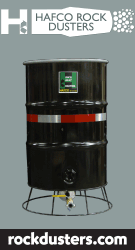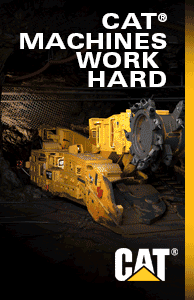Coal Shippers Benefit as Mine Industry Enjoys a Rebound
All Christy Laxton has to do to see if the coal market has improved is look out her office window.
“We have a railroad track that runs right behind our office. We had had very few (coal trains), but right now we have one a day, which is very good,” said Laxton, executive director of the Wyoming County Economic Development Authority.
It’s the same in Boone County.
“We’ve seen the coal trains. I know because they go right by our office,” said Kris Mitchell, executive director of the Boone County Community and Economic Development Corp.
As coal has enjoyed a rebound the past few months, more of the commodity has been moving by rail through West Virginia. But not all modes of transportation are created equal. Rail, in particular, has benefited more than others.
That’s not to say some other transportation industries haven’t also shared in the recovery. Darren “Chig” Lusk, who owns and operates a trucking business in Wyoming County, spent last year scratching for work in South Carolina when the West Virginia coal industry went into the doldrums. Now, he says, he’s home and prospering.
HAULING BUSINESS REBOUNDS
“From an anecdotal standpoint, we’re hearing that people from all parts of the state that are accustomed to a certain volume of coal traffic — almost without exception — are seeing an increase throughout the first four months of this year and even beginning at the end of 2016,” said Chris Hamilton, vice president of the West Virginia Coal Association.That’s more coal trains, more coal trucks and more coal barges, Hamilton said.Metallurgical coal is stronger in part because a tropical storm damaged mines in Australia earlier this year. The rebound is similar to one in 2011 when Australian met coal mines were — as this year — shut down because of storm damage, Hamilton said.
“The real question is whether or not this market at the current time can be sustained going forward,’ Hamilton said.
Some mines in West Virginia are expanding work schedules, and some have recalled furloughed workers, he said.
Neither CSX nor Norfolk Southern, the two Class I railroads operating in West Virginia, release state-by-state numbers for where their coal traffic originates. Both railroads reported an increase in coal traffic in the first quarter, which was a reversal of a longstanding trend that had seen coal volumes and coal revenues decrease over several years.
CSX reported a 2 percent year-over-year increase in the first quarter. Domestic coal volumes were down 19 percent from the last quarter of 2016 and 14 percent over the same period last year, due primarily to mild winter weather and a previously announced competitive loss, said CSX spokeswoman Laura Phelps.
CSX’s export coal volumes in the first three months of 2017 increased 50 percent over the same period last year and 12 percent compared to the previous quarter as global coal supply levels and pricing conditions extended the strong demand for U.S. coal exports, Phelps said.
“For Central Appalachia, this included an incremental year over year increase in metallurgical coal in the first quarter of 2017, while demand for thermal coal from this region remained stable,” Phelps said. “Looking ahead, we expect coal to continue its decline on the domestic side, while demand for exports will remain strong in the short-term and taper off through the end of the year.”
CSX has a new CEO in Hunter Harrison. Harrison has said he is looking to make changes in the railroad’s coal network.
Phelps said, “In this environment, CSX’s management team is conducting a comprehensive review of the company’s operations across our network and making adjustments to improve efficiency, customer service and control costs. There is no specific timeline for these changes, but as adjustments are made, CSX will communicate with customers and all stakeholders about how they may be impacted.”
COAL TRUCKER
While railroads are benefiting from the recovery — for now — in the metallurgical coal markets, truckers have not benefited as much. What’s been good for the railroads has not been so good for them, at least when it comes to hauling coal.Some people in southern West Virginia say they have seen more trucks on the road, while others say coal truck traffic has barely changed.Lusk considers himself one of the lucky ones, as his business in the past two years has gone from riches to rags and back to riches.
“I’ve been in business in Wyoming County 26 years. All I’ve ever done is haul coal,” said Lusk, president and owner of C & C Leasing and Excavating of Oceana.
Business was good up until five or six years ago, when Lusk had to sell most of his trucks because his business dropped off. He went from 40 employees to four.
Early last year, he took some of his equipment to Charleston, South Carolina, and later to Spartanburg, South Carolina, to do trucking and earth-moving work for companies there. He said he lived in a travel trailer and came home to see his family every third weekend.
Then, as asphalt plants closed for the winter, he got lucky. A person at a mine in Boone County called and asked if he was ready to haul coal again.
“I said yeah. I’ve got trucks that have been sitting at my office for three years. He said, ‘It’s your lucky day,’” Lusk said.
“If everything goes okay and the coal market stays good, it has a 10-year future,” Lusk said.
He said he’s also working at an Alpha Natural Resources mine in Wyoming County. His company hauls coal and rock, and its workers are building a road at the mine and performing other labor, Lusk said.
Lusk said his company went from three trucks to 16, and it’s back up to 26 employees, including his mother-in-law and his son, Jerred, who he considers his business partner.
“It went from mild and barely working to wild and can’t keep up,” he said. “I’m on the Trump train, baby.”
WATER SHIPMENTS
While most of the coal that moves by water in West Virginia is thermal coal for power plants instead of met coal, shipments on the Ohio River increased in the first quarter while those on the Kanawha River decreased. All seven locks and dams on the part of the Ohio bordering West Virginia saw increases in coal tonnage in the first quarter.Tonnage on the Ohio benefits from the Northern Appalachian mines of the Northern Panhandle, which is still in demand, while the Kanawha River carries coal from what is known as the Central Appalachian region, which has seen its demand decline significantly over the past few years.
Part of that is competition from the Illinois Basin of Illinois and western Kentucky. Central Appalachian coal took market share from the Illinois Basin about 20 years ago when Clean Air Act standards made Illinois Basin coal, which is dirtier than Central Appalachian coal, less desirable. But as utilities added pollution-control equipment to their power plants, Illinois Basin coal returned to the market at a lower price than Central Appalachian coal.
- By Jim Ross, The State Journal























